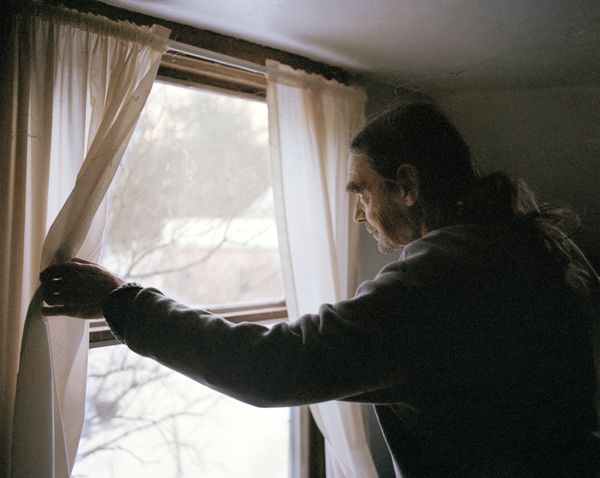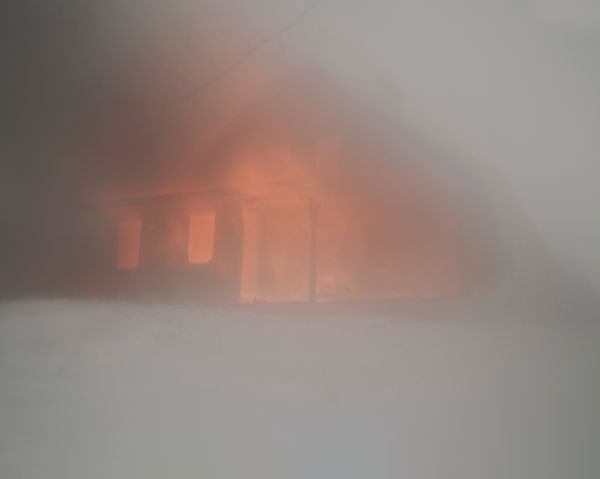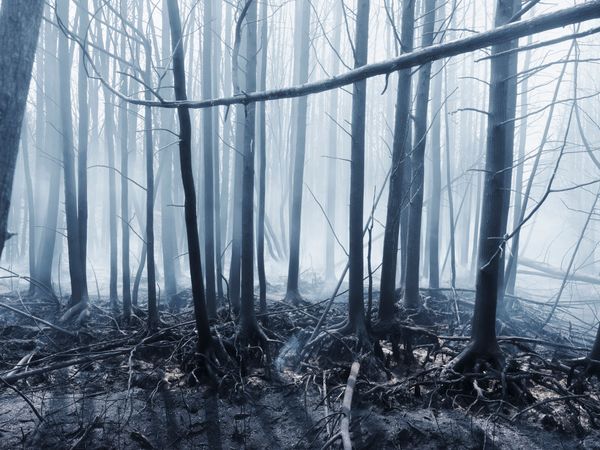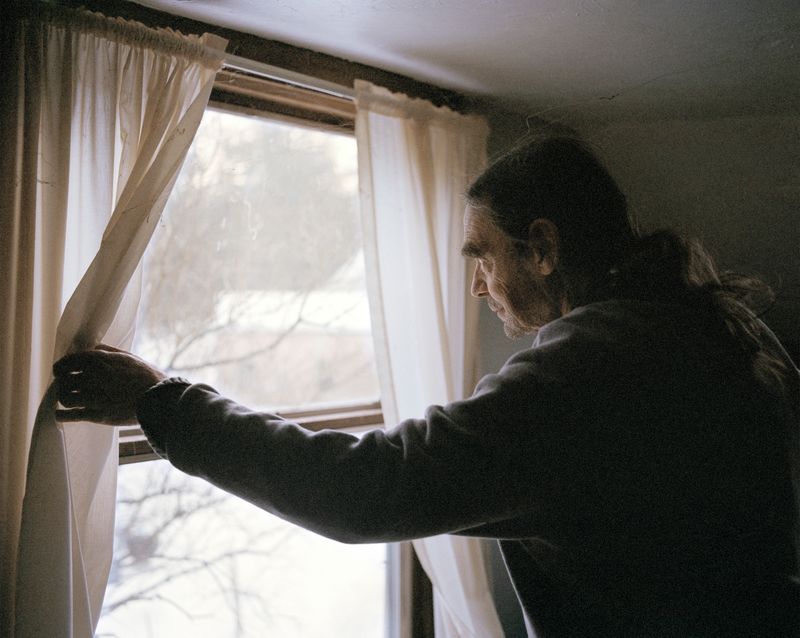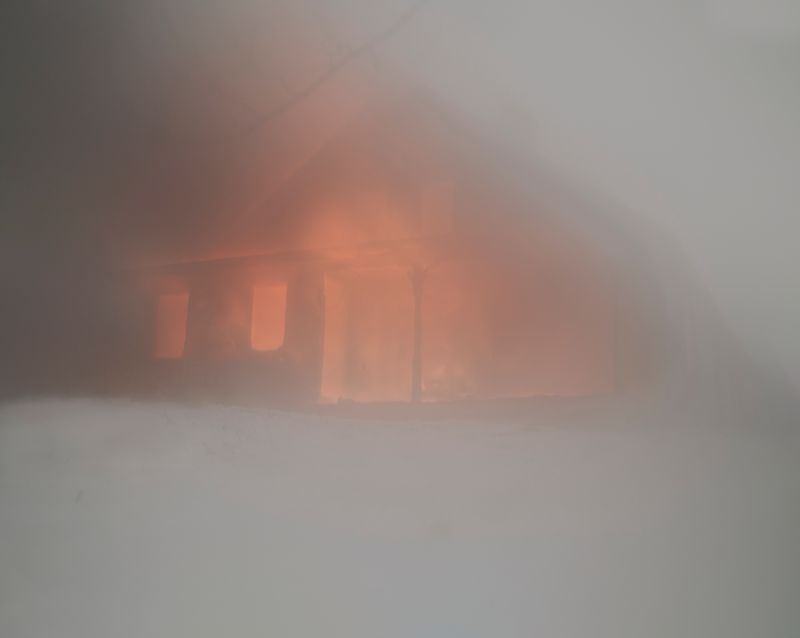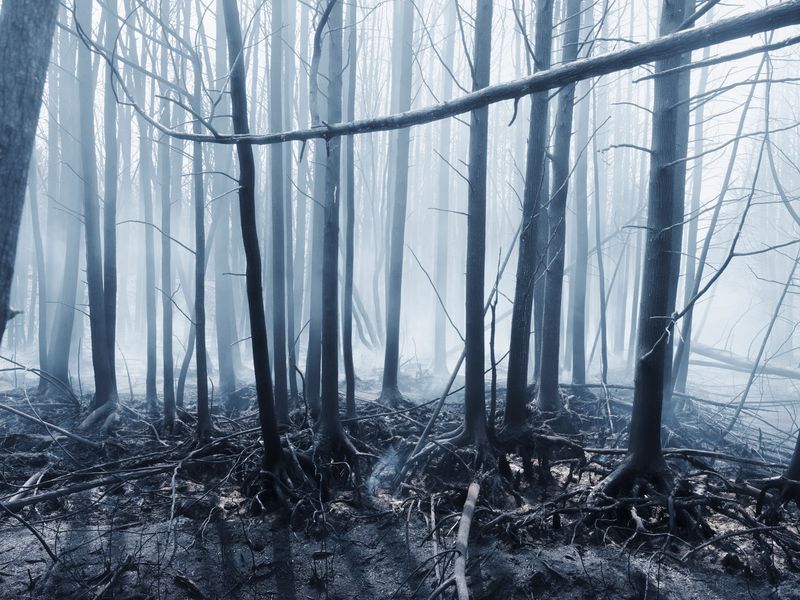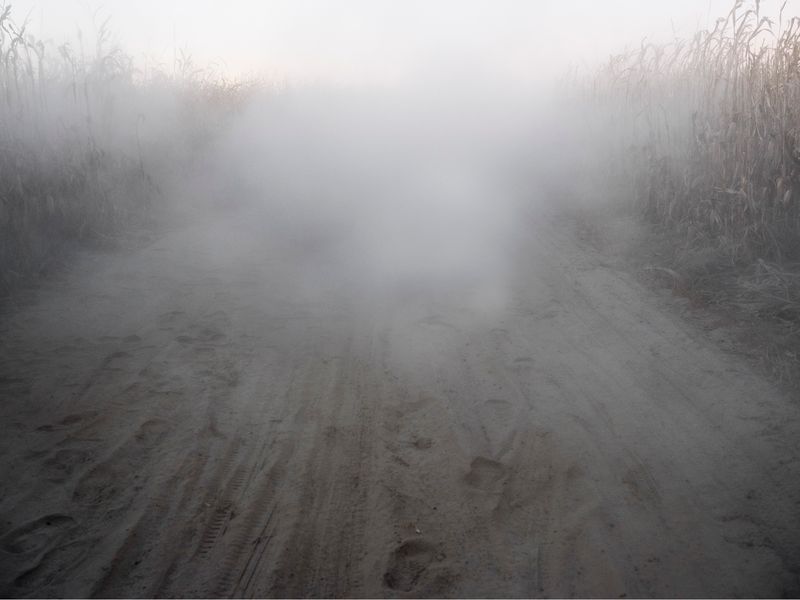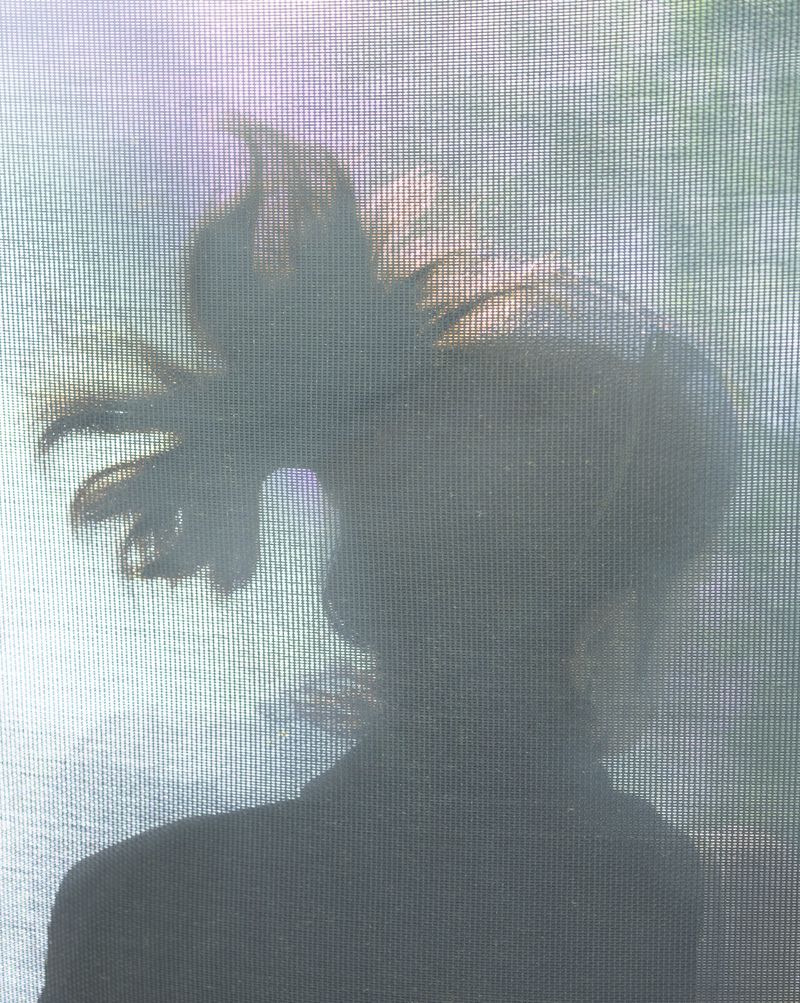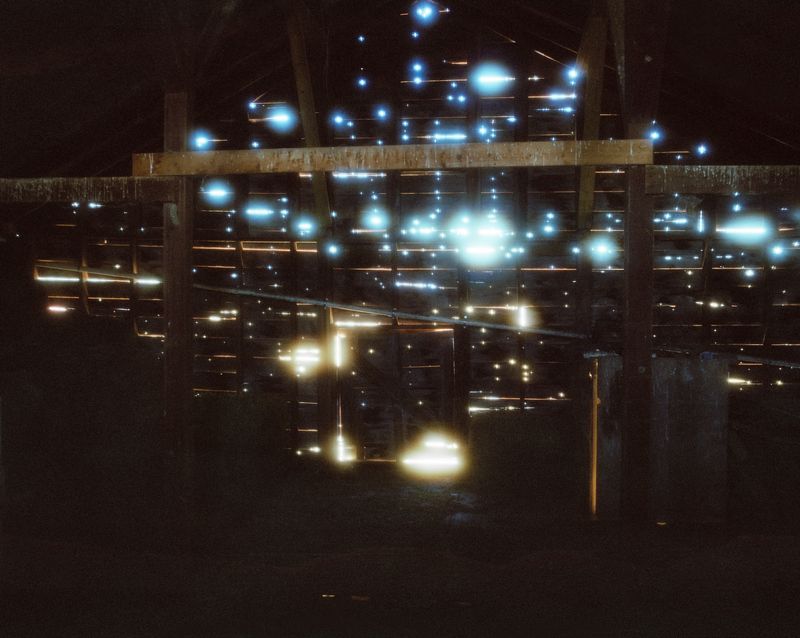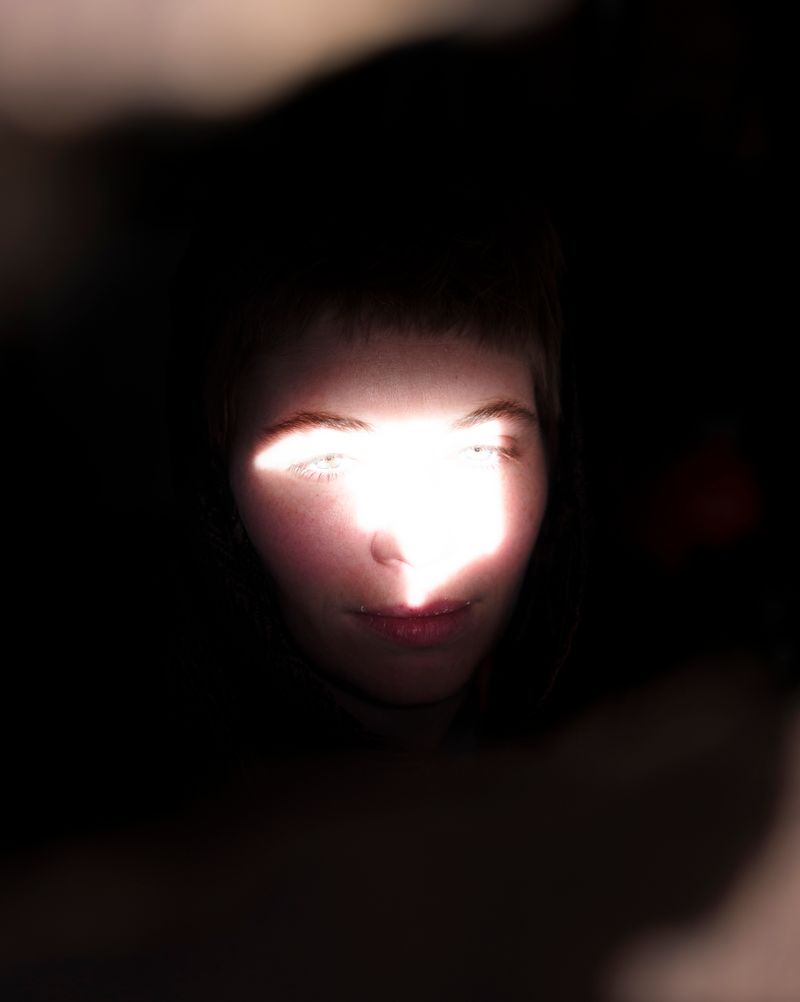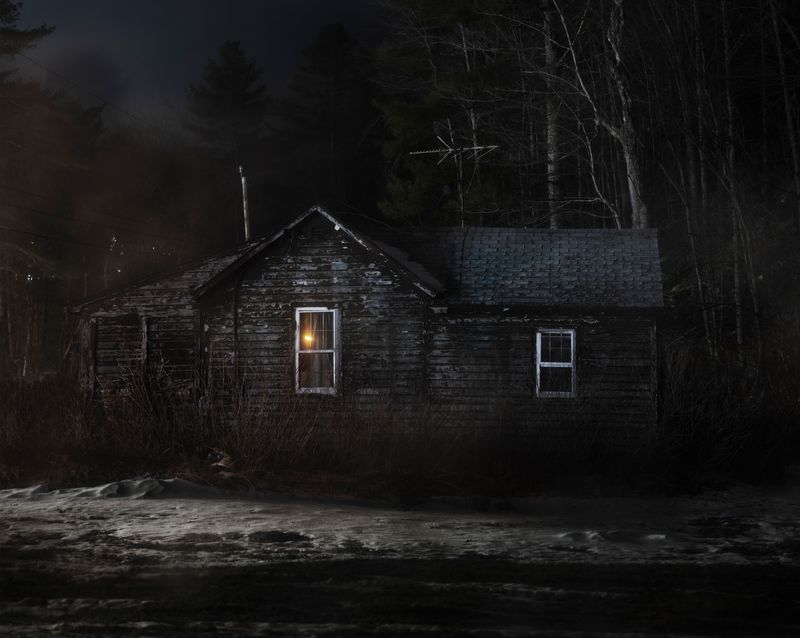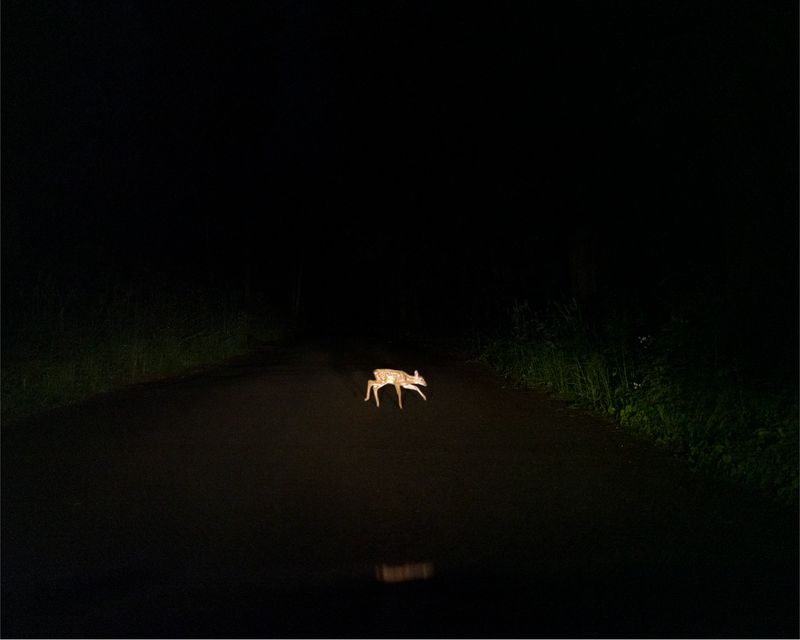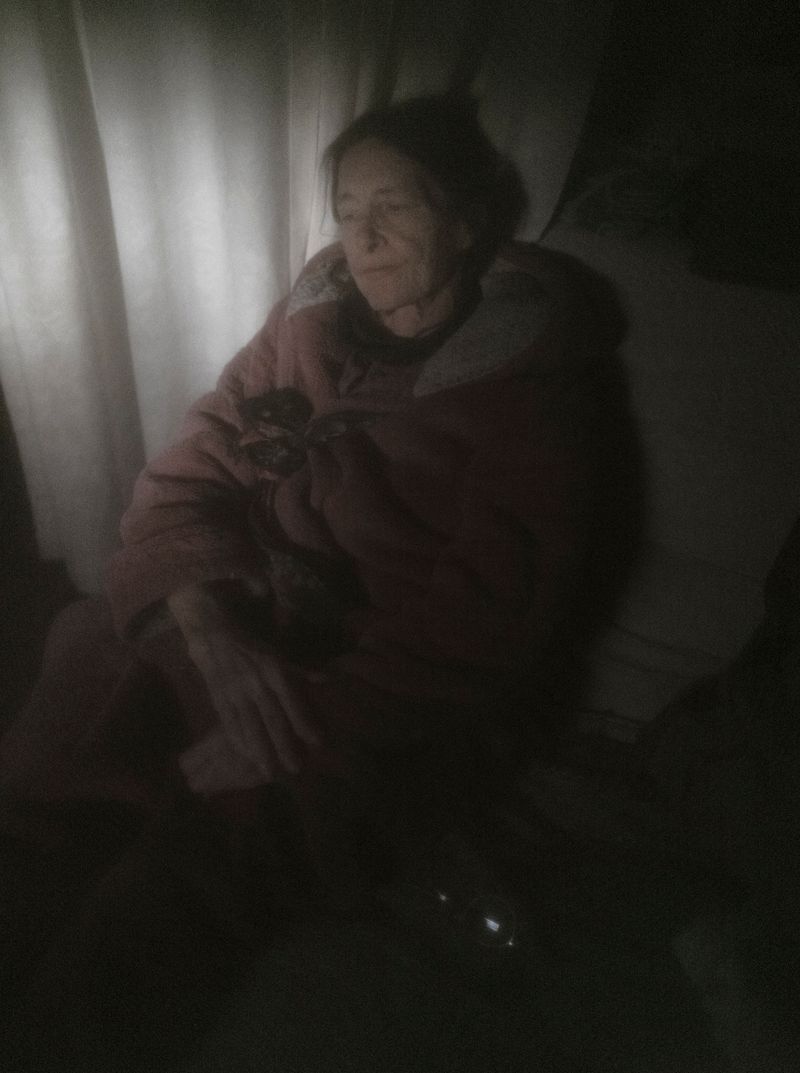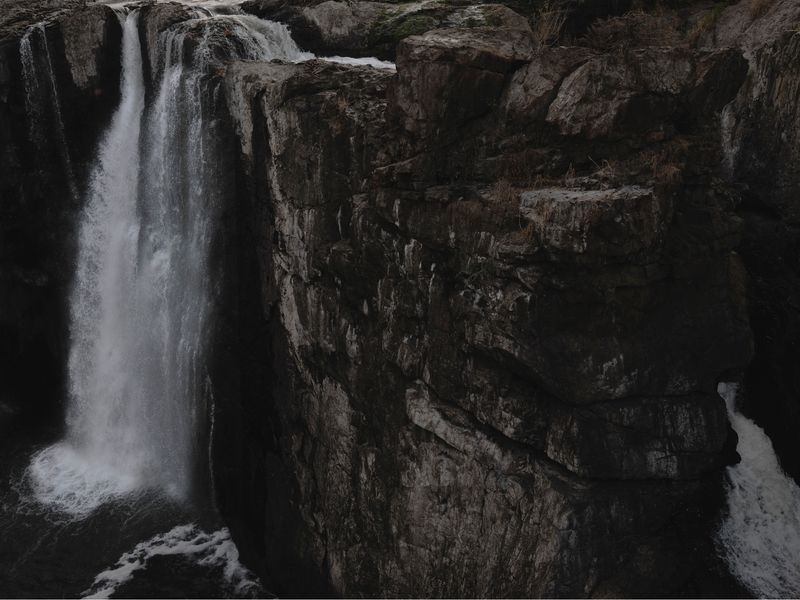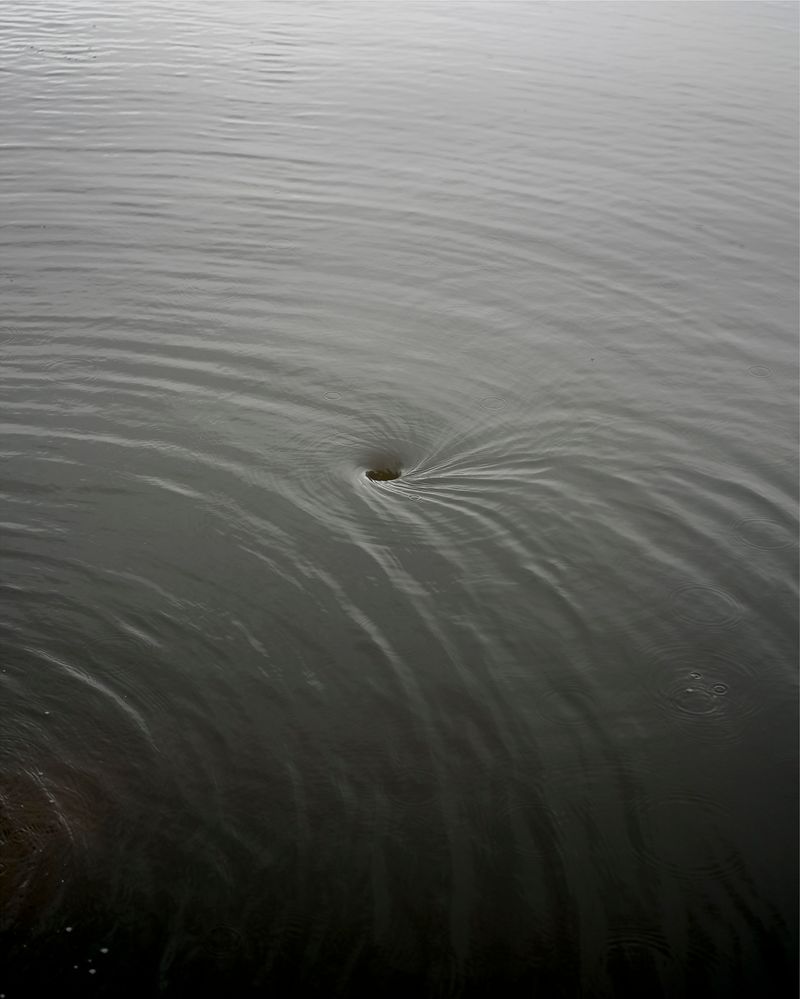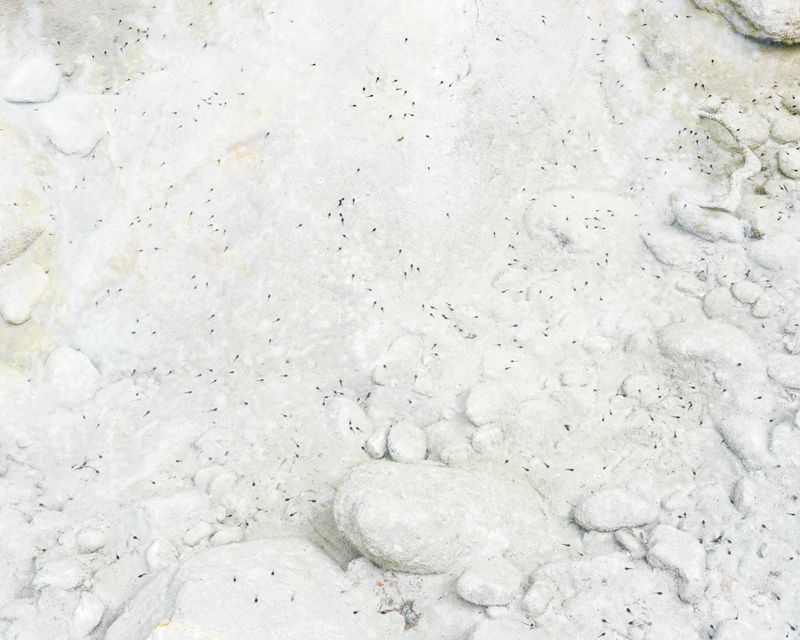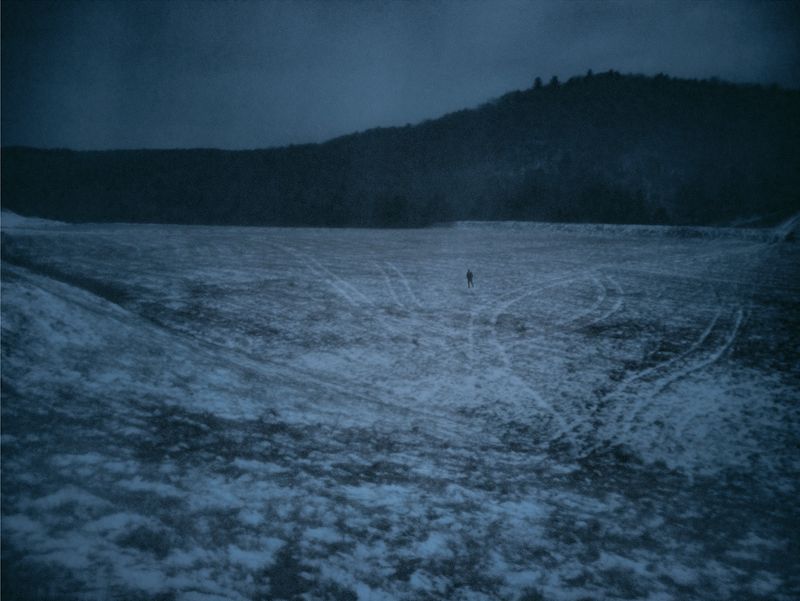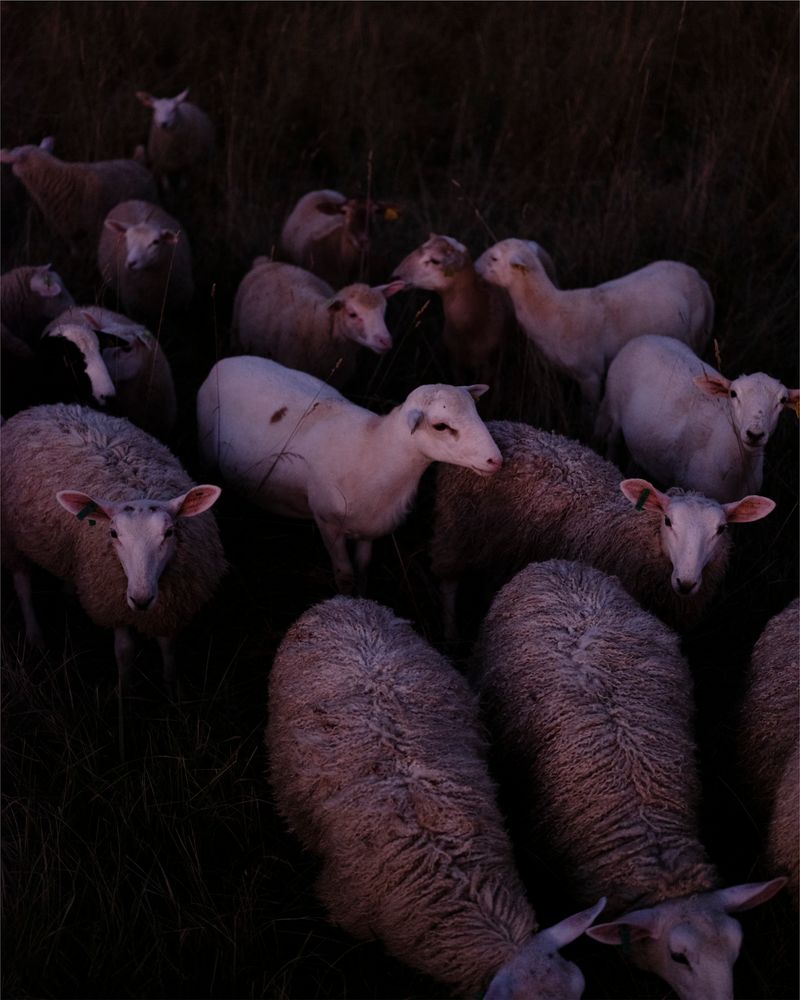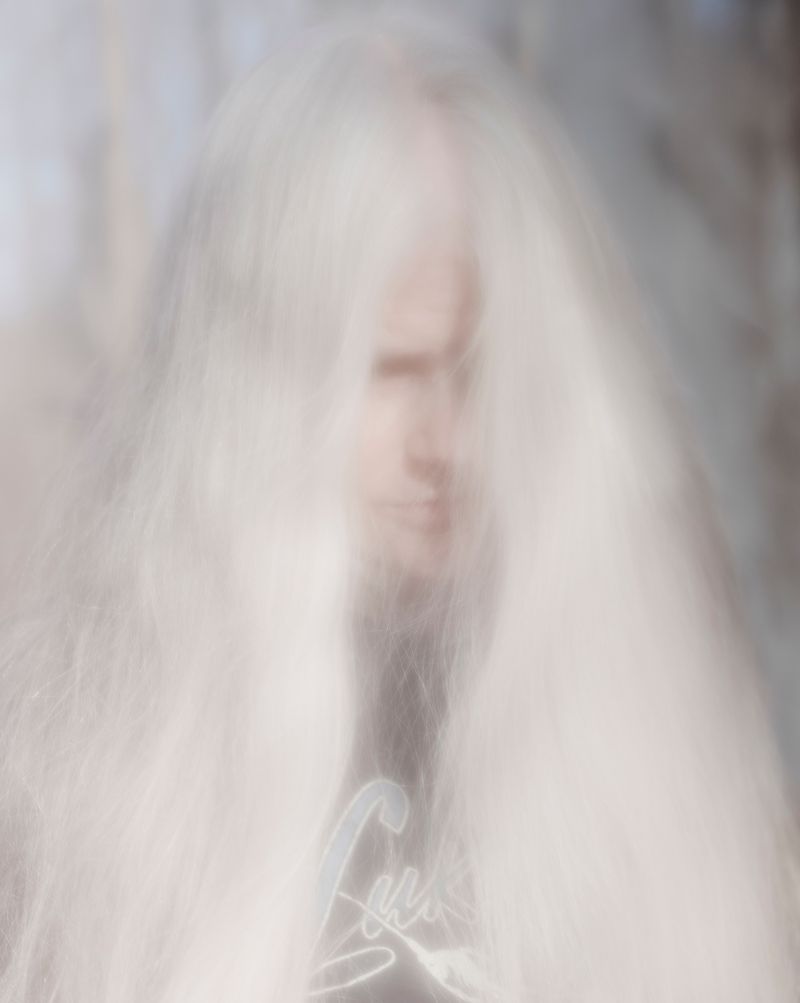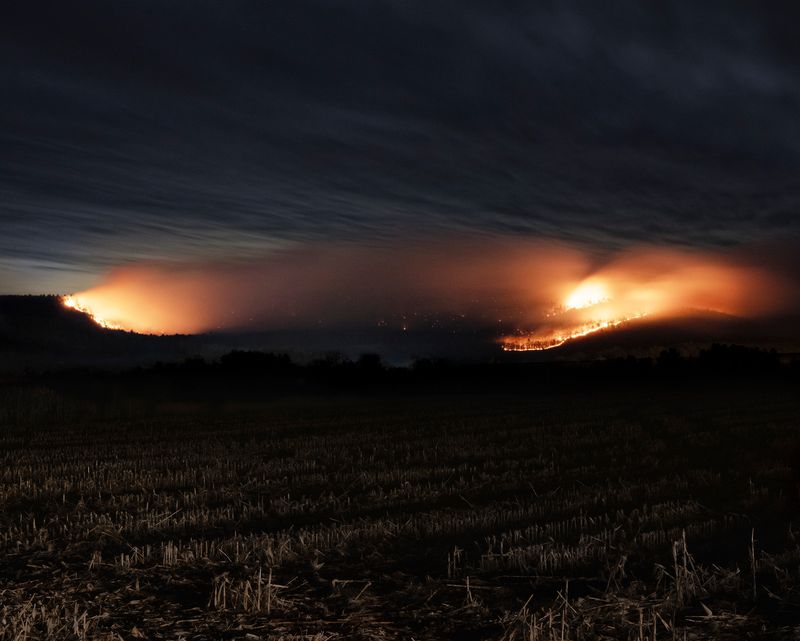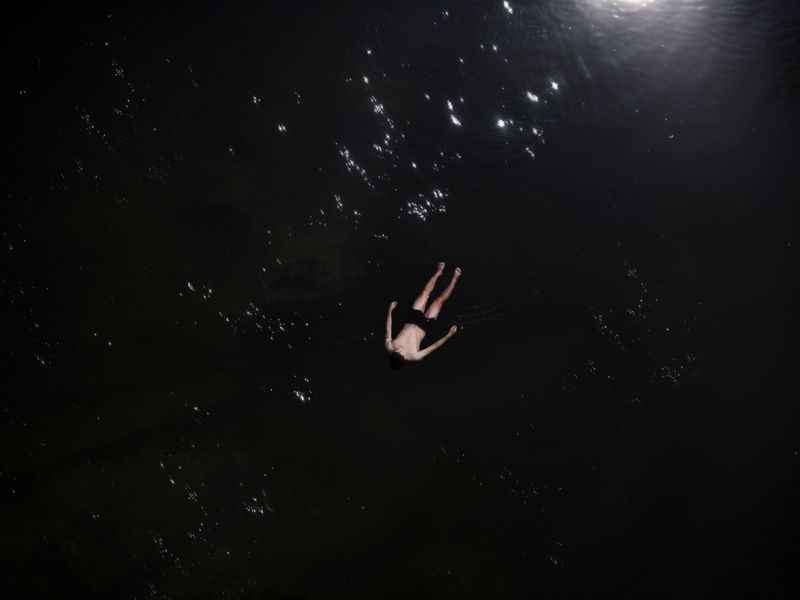Hotchkiss
-
Dates2022 - Ongoing
-
Author
- Location New Haven, United States
Through the creation of a pseudo-fictionalized space Hotchkiss explores elemental landscapes that are geographically decontextualized in order for place itself to function as a container that can alter human emotion and create specific psychologies.
Southfield, Massachusetts, is a one-road town with a year-round population of twenty-five people. Dense forest, swamps, and marble hills surround its outer reaches. It is an elemental place, a town subject and sensitive to a higher order of natural phenomena; a town written by the language of landscape.
I moved to this small rural hamlet in 2022 and became aware of the embedded contradictions within the rural landscape and how it took effect on my own psychology, behavior, and emotions. Drawing from these personal experiences, memories, and the dictation of place throughout Russian literature “In the town of O. In the providence of N,” Hotchkiss functions as a fictional, conglomerated space that explores how the rural landscape acts as a catalyst in the formation of paradoxical emotions. In these elemental spaces, things such as the changing of seasons, rapid weather variations, and natural phenomena change the physical landscape in drastic ways and dictate the movement of the human body— offering both permissions and restrictions correlative to constructing emotional headspaces. These internal spaces are caused by a landscape in flux and through both natural and unnatural processes, the landscape imparts dichotomic offerings of vitality and death, bliss and madness, comfort and destabilization, and community and isolation- offerings inherently heightened by the climate crisis.
By making interventions into the landscape, I use the camera to create decontextualized vistas, portray evidence of natural phenomena and explore the role of absence and presence in a landscape that is simultaneously for and against your existence. With my time in Southfield being used as a source of original inspiration my goal is to create a space of multitudes but also one that exists as a representational microcosm of the climate crisis. With the current US administrations’ denial of the climate crisis, it is imperative to examine the entwined relationship between humans and the natural world and how, through this relationship, we can better understand how elements of the human condition are manufactured by the landscape itself. By using visual codes of beauty, anxiety, and terror my goal is to not document the legitimate effects of the climate crisis but rather use fiction as a photographic narrative structure that creates a conduit for the graspable natural violence of the contemporary landscape. By engaging with themes of vitality, illusion, disappearance, and isolation to question notions of home, the natural world, and our internal landscapes, my photographs serve as a bridge to what may prove to be our largest physical and existential crisis.
Hotchkiss is still in progress and I feel that there are still questions to answer. How do I put form to a contradictory world? What is my role as a conduit between this created space and the audience? How do painful facts collide with romantic fictions? As a current graduate student at the Yale School of Art, I have the rare opportunity over the coming school year to have undisrupted time to refine, reconsider, visually answer pertinent questions, and continue to work through the strengths and weaknesses of the work. Over the summer and during the school year, I will be traveling through the Ozark Mountains of Arkansas and continue my explorations throughout the North East as a means of introducing new entry points into the work, grapple with my themes more specifically, and build out the work I have been making over the past three years.
I have always imagined this project as a book and share a similar sentiment expressed by Moyra Davey in her book Index Cards “I’m convinced that reproducibility in book form is part of the vocabulary of the photograph.” Taking inspiration from prior landscape works such as Barbara Bosworth’s The Meadow, Stephen Gill’s The Pillar, and Jenia Fridlyand’s Entrance to our Valley, I believe the photobook is the ideal photographic system that allows the image to be put into a complex and coherent container. My hope is to put Hotchkiss into this container and through sequence, design, and accessibility, I hope for it to live in a space where a surreal narrative, existential themes, and the clash of fact and fiction is fathomable. With mentorship coming from both the PH Team and my professors at school, I believe this opportunity would put Hotchkiss in its most fertile state for growth since its inception. With the June 2026 deadline instated by the prize I have no doubt that through the creation of new images, the editing of my pre-existing archive, and mentorship across the board Hotchkiss will finally transcend into a completed state ready for publishing.
